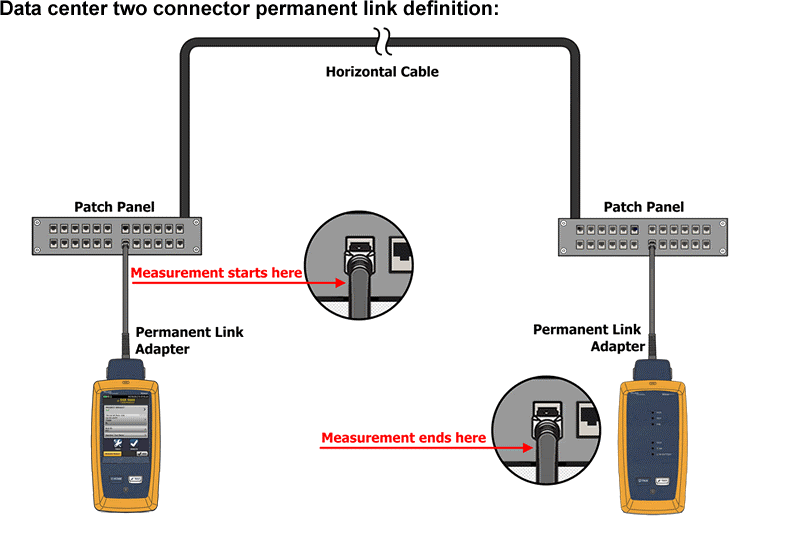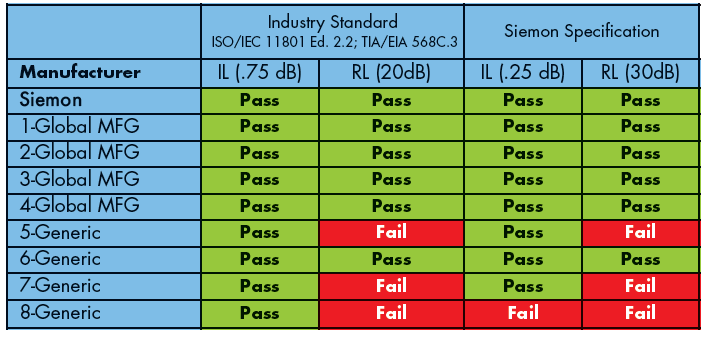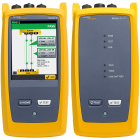Como testar cabos de conexão e cabos de ligação direta de fibra - os links mais fracos
10 de junho de 2021 / Geral, fundamentos de aprendizado, instalação e teste, melhores práticas
Equipment cords are an integral part of any network—whether it’s a fiber jumper used to make connections between fiber patching areas and switches in the data center or a copper patch cord out in the LAN to connect end devices to the work area outlet.
Unfortunately, equipment cords are also typically the weakest link in the network. They are handled and manipulated more than any other component, which makes them more susceptible to damage. They are also often considered a commodity item and some end-users will seek to save money by purchasing them from lesser-known, generic sources that may skimp on quality and compliance.
Channel Testing vs Permanent Link Testing

The overall 100-meter length of the channel includes both the fixed portion (i.e., 90-meter permanent link) and the equipment cords (a combined length of 10 meters). But permanent link testing that doesn’t include the equipment cords is typically considered best practice for new installations—patch panel to patch panel in the data center or patch panel to work area outlet in the LAN.
If the complete end-to-end data transmission relies on the performance of the channel, why do we use permanent link testing for new installations? As the fixed portion of the channel, the permanent link is considered the true foundation of the network, and if you test the channel, problems with that foundation could go undetected.
You see, channel testing offers more headroom due to equipment cords being the weakest link. That means that if high-quality equipment cords are used, the channel could pass even if the permanent link has failed. Considering that equipment cords and equipment move around, it’s important to know upfront that the fixed portion of the channel will work.
Just because equipment cords are not included in upfront permanent link testing does not mean they should be overlooked. Once the fixed portion of the network has been installed and tested, subsequent channel testing can identify problems with the equipment cords—especially down the road if your customer is having problems due to the use of damaged or subpar equipment cords. And this problem is more common than you might think.
Copper Patch Cord Quality Tests
To get an idea of equipment cord quality, the Communications Cable and Connectivity Association (CCCA) completed large-scale, electrical performance testing of Category 6 copper patch cords, which tested nearly 500 samples that included 379 cords from offshore, lesser-known manufacturers and 120 cords from well-known North American manufacturers.
Of the 379 offshore patch cords, 322 of them failed electrical performance parameters specified in TIA 568-C.2 standards with 78% failing by a margin of 3dB or more and 45% failing by a margin of 6dB or more. These cords would have likely led to significant network problems once included in the channel. All the patch cords from recognized North American manufacturers showed 0% failure rate.
Fiber Jumper Quality Tests
And we’ve seen the same problems with fiber. Siemon conducted a test of generic fiber jumpers purchased through on-line retailers that were produced by 4 generic domestic and offshore assembly houses, as well as jumpers from 5 recognized brands (including Siemon), which were all purchased through authorized distributors.
The team performed insertion loss and return loss testing on 36 random samples of duplex LC multimode jumpers from the 9 different suppliers using two specifications. ISO/IEC and TIA industry standards and Siemon’s strict, internal specification of 0.25dB for insertion loss and 30dB for return loss. As the graph shows, only one of the generic suppliers passed all specifications. In addition, to performance testing, all generic samples also failed at least two of the three key parameters for end face geometry and they failed all four parameters for mechanical reliability (i.e., cable pull, flex, torsion and retention).

Siemon also did a second round of testing but looked at the latest MPO connecters used in higher-speed 40 and 100 Gig applications. Again, only one of the generic assemblies passed both industry and internal Siemon specifications for insertion loss and return loss.
What does this data tell us? Buyer beware! The source of your equipment cords can have a significant impact on performance. Inexpensive, generic options may end up costing you more in the long run if they cause network downtime and transmission problems.
Do Your Own Patch Cord and Fiber Jumper Testing
In addition to performing channel testing after equipment cords are in place to determine problems with patch cords and jumpers, they can also be tested individually—and its good practice to test a sampling of cords, especially if you’re purchasing them from a different supplier than the rest of your cabling plant.
Fluke Network’s DSX Series Patch Cord Test Adapters can be used to test Category 5e, 6, and 6A copper patch cords. These adapters include the RJ45 plug termination and enable patch cord certification per TIA-568-C.2 and IEC 61935-2 standards.
And when it comes to fiber jumpers, testing is like testing any fiber optic cable using an optical loss test set (OLTS) like Fluke Networks’ CertiFiber Pro. Just use the one-jumper reference method to set the reference and an adapter to connect the jumper to the test reference cord. Com a outra extremidade do jumper conectada à unidade remota, apenas a perda da conexão entre o cabo de referência e o jumper é testada. Simply reverse the jumper to test the connector on the other end.
It’s also wise to inspect the end faces of fiber jumpers for contamination and cleanliness using a microscope or inspection tester like the FI-7000 InspectorPro designed specifically for end face inspection.
In other words, there are plenty of ways to say goodbye to your network’s weakest links.







